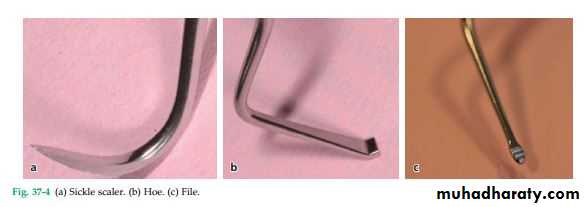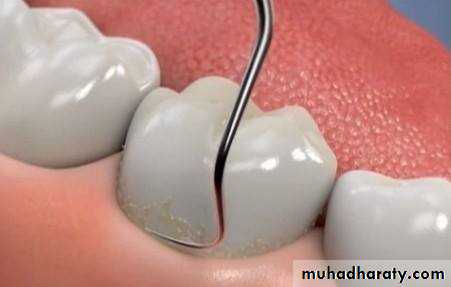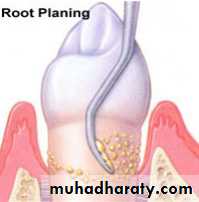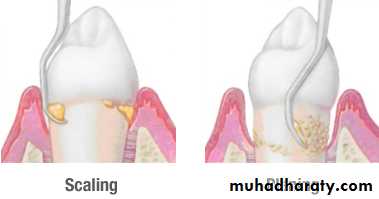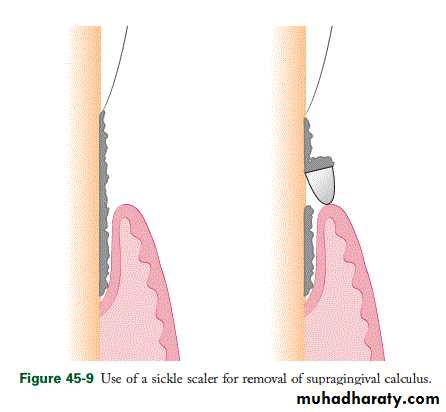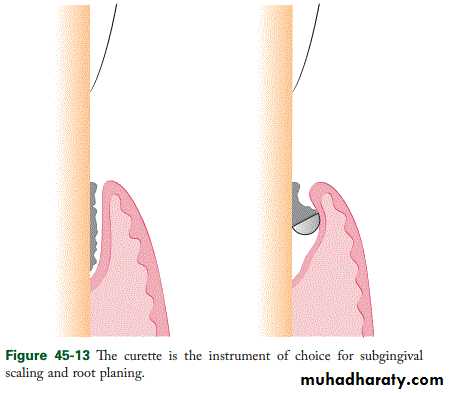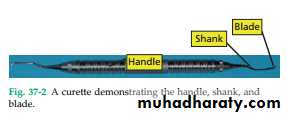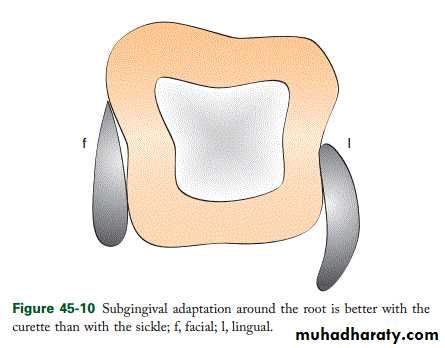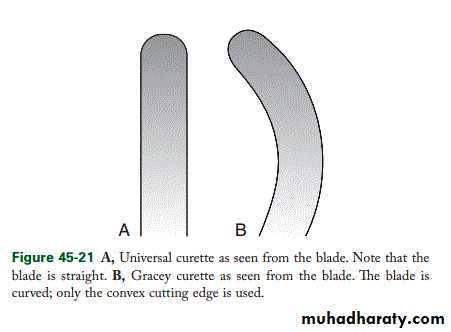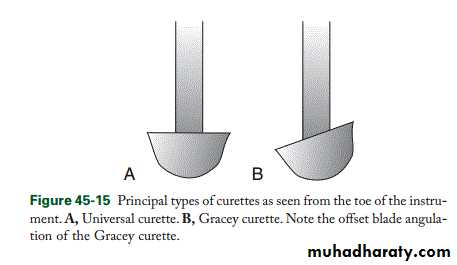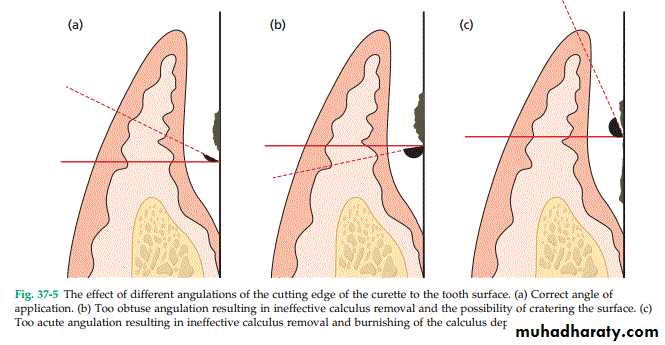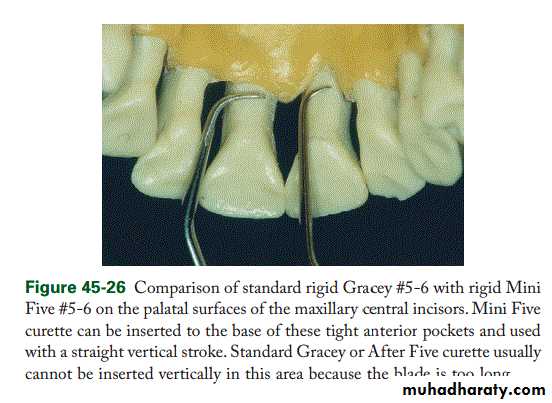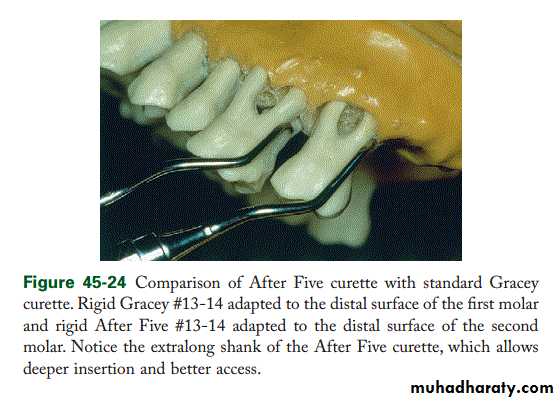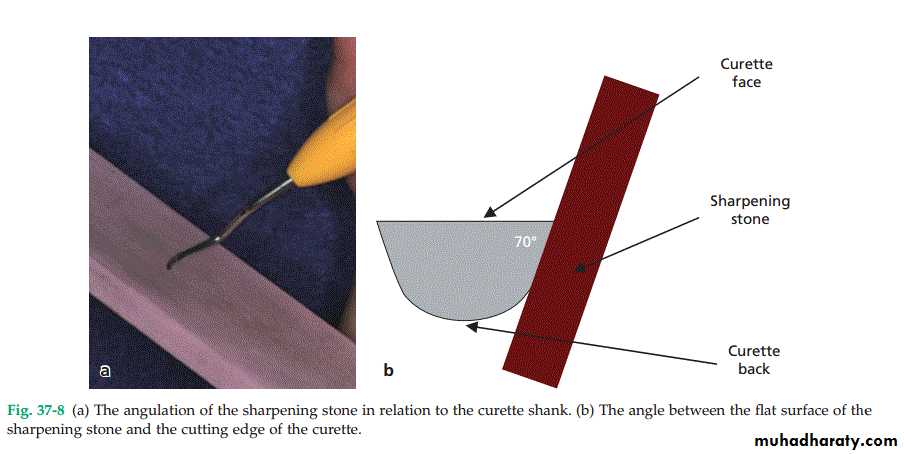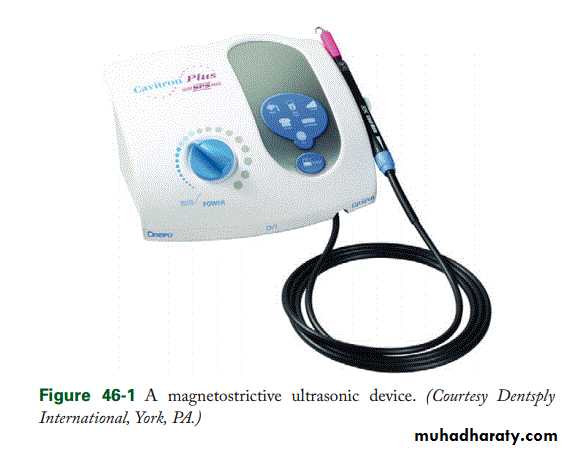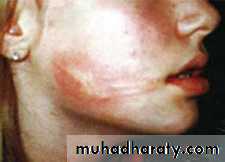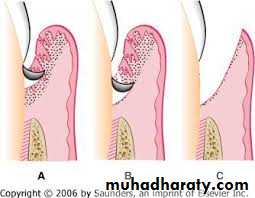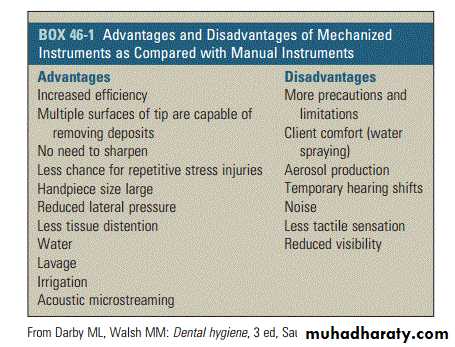University of Mosulcollege of DentistryOral and Maxillofacial dept.periodontics unit
Periodontologyد.فهد الدباغ
Lecture: Professional plaque control
Rearranged by:
Marwan Ramadan
Fifth stage
Objectives
completely removing elements that provoke gingival inflammation (plaque, calculus, and endotoxin) from the tooth surface.Thus restoring gingival health
Objectives
Reduction of spirochetes and putative pathogens such asActinobocillus actinomycetemcomitans, Porphyromonas gingivalis,and Prevotello intermediaIncrease in coccoid cells occur.
reduction or elimination of inflammation clinically
must be sustained by the periodic scaling and root planing performedduring supportive periodontal therapy.
Scaling
is the process by which plaque and calculus are removed from both supra-gingival and sub-gingival tooth surfaces. No deliberate attempt is made to remove tooth substance along with the calculus
Root planing
is the process by which residualembedded calculus and portions
of cementum are removed
from the roots to produce a
smooth, hard, clean surface
Difference
enamel surfaces are relatively smooth and uniform. So the deposits are superficially attached to the surface and are not locked into irregularities.Deposits on root surfaces are frequently embedded in cemental irregularities.
Technique.. supra gingival VS sub gingival
Supra gingival calculus (less tenacious and less calcified) adaptation and angulations easierallows direct visibility as well as a freedom of movement.
Sickles, curettes, and ultrasonic and sonic instruments ( most common), Hoes and chisels ( less frequently)
Technique ..Supra-gingival
instrument held with a modified pen graspfirm finger rest is established on the teeth adjacent to the working area.
The blade is adapted with an angulations of slightly less than 90 degrees to the surface being scaled
The cutting edge should engage the apical margin of the supra gingival calculus
scaling strokes are short, powerful, overlapping, activated coronally in a vertical or an oblique direction
Supra gingival scaling
a. Modified pen grasping b. finger rest in close proximity to the area of instrumentation
Technique ..supra-gingivalThe sharply pointed tip of the sickle is positioned on surface to be scaled to prevent laceration ofmarginal tissue
Checked visually and tactilely
free of all supra gingival deposits
(If the tissue is retractable enough)
the sickle may be used slightly
below the free gingivalmargin, (final scaling and root
planing should always follow).
Technique.. Sub-gingival
Subgingival calculus is locked intoroot irregularities(more tenacious)
Vision is obscured by the bleeding
clinician must rely heavily ontactile sensitivity.
the adjacent pocket wall limits thedirection and length of the strokes.
Technique / Sub gingival
curette is preferred• curved blade• rounded toe• curved backGracey / Universal
Graceyuniversal
Area of use
Set of many curettes designed for specific areas and surfaces.
One curette designed for all areas and surfaces
Cutting Edge
One cutting edge used
Beth cutting edges used:
use
work with outer edge only
work with either outer or inner edge
Curvature
Curved in two planes blade curves up and to the side
Curved m one plane; trade curves up, not to theside
Blade angle
Offset blade: face of blade beveled at 60 degrees to shank
Blade not offset: face of blade- beveled at 90 degrees to shank
Gracey B / Universal A
Technique / Sub gingival
Gracey curetteTeeth (surfaces)
1-2
anterior
3-d
Anterior
3-<S
Anterior and premolar
7-S
Posterior (buccal and lingual)
9-10
Posterior (buccal and lingual)
11-12
Posterior (mesial)
13-14
Posterior (distal)
Technique.. sub gingival
Technique sub- gingival
Technique..sub-gingival
technique / Sharpening
Ultrasonic instrumentation
The working end must come in contact with the calculus deposit to fracture and remove itlight touch and light pressure
keeping the tip parallel to
the tooth surface
constantly in motion
a series of rapid,
overlapping strokes
Ultrasonic instrumentation
Avoid Leaving the tip in one place for too long using the point of the tip against the tooth ( roughening of the root surface or overheating of the tooth)Ultrasonic instrumentation indications
Supragingival scaling With fine tips for subgingival scaling and root debridement of deep pockets and furcations (used with low power)Gingival curettage
Remove overhangs
and excess cement aftercementing orthodontic appliances.
Gingival curettage
Ultrasonic VS Hand Ins.It can cause the patient less discomfort.
The instruments are cheaper to buy and maintain.
There are no aerosols.
A chair side dental nurse is not essential.
Ultrasonic VS Hand Ins.
It is easier for the operator.There is generally a shorter instrumentation time.
It requires minimal stroke pressure.
There is less iatrogenic damage to the periodontium.
There is minimal cementum removal.
Generally quicker than hand scaling to acquire the necessary skills.
It is not dependent on permanently sharp instruments.
The fluid lavage flushes out debris, bacteria and unattached plaque.
Precision-thin tips have been shown to penetrate deeper than hand instruments.
Final evaluation
carefully inspected visually with optimal lighting ,a mouth mirror and compressed airexamined with a fine explorer or probe. Sub gingival surfaces(hard and smooth).

